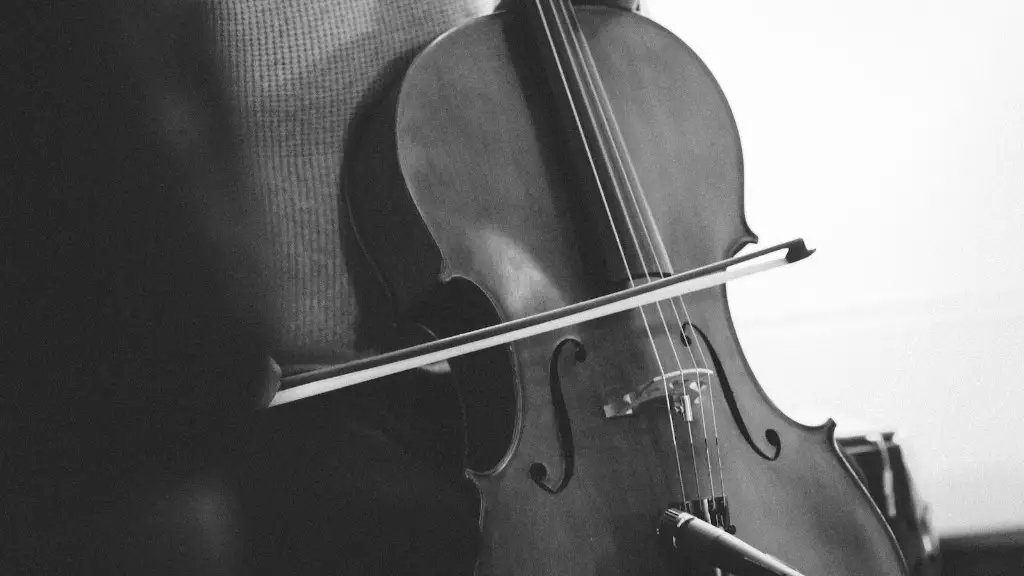The trumpet is a popular brass instrument used by many musicians in a variety of settings. It is known for its distinctive sound and wide range of notes. But how many valves does the trumpet have?
The modern trumpet is typically equipped with three valves, each of which can be used to alter the sound of the instrument. The valves are located on the main body of the trumpet and are operated using the right hand while playing. By pressing down on one or more valves, the musician can change the length of the tubes that vibrate to create different notes.
The combination of pressing down one or two valves at a time can be used to produce different notes and create more complex sounds. This allows players to add more expression and nuance to their music. The use of three valves also makes it easier for players to reach higher notes, as well as play more accurately in tune.
In conclusion, most trumpets have three valves, although some may have four or five depending on its design. For most cases though, three valves should be enough for most players to get great sounds out of their instrument.
Benefits of Trumpet Valves
The trumpet is one of the most versatile instruments in the brass family, and its valves play an important role in achieving a wide range of sounds. The three valves on a trumpet can be used to alter the length of tubing that the air must travel through, which changes the pitch and tone of the instrument. The valves also allow for more rapid note changes and provide access to alternate fingerings for many notes. All these features make the trumpet an incredibly expressive instrument, capable of producing dynamic and unique sounds.
The valves also offer some practical benefits. By changing the tubing length, trumpeters can make more efficient use of air, which can help with endurance and breath control during extended technique passages or solos. Additionally, having three valves allows for easier access to some notes that would otherwise require awkward fingerings or alternate positions. This is especially helpful when playing fast passages or complex intervals.
In short, having three valves on a trumpet gives players a huge amount of flexibility and control over their sound. Whether they’re playing classical pieces or improvising jazz solos, trumpet players are able to create beautiful music with impressive technical skill.
How to Choose the Right Trumpet Valves
Finding the right trumpet valves is an important part of owning a trumpet. The number of valves a trumpet has will affect how it plays and sounds, so it’s important to consider all your options before making a purchase. There are two common types of valves: rotary and piston. Rotary valves offer faster action, but can be difficult to maintain, while piston valves provide a more reliable and consistent sound. Depending on the model, some trumpets may have three or four valves. Three-valve models are usually preferred by classical and jazz musicians, as they offer a wide range of articulation options. Four-valve trumpets are typically used in marching bands or orchestras and have longer valve slides for greater range of expression.
When selecting a trumpet valve, make sure it fits comfortably in your hand and resists sticking when pressed down. It’s also important to check that the valve casings are made with durable materials that won’t corrode over time. Finally, make sure you get your instrument serviced regularly to ensure optimal performance and longevity. With the right valve selection, you can ensure your trumpet plays beautifully for years to come!
Trumpet Valves Maintenance
Keeping trumpet valves in good condition is essential for a great sound. Trumpets have 3 valves that need to be regularly maintained. All valves should be oiled regularly to ensure smooth playability. It is important to use the correct valve oil, as some oils can damage the instrument. The pistons should also be cleaned and lubricated with a grease specifically made for instruments. If valves become sticky or sluggish, they should be replaced.
It is also important to check the alignment of the valve slides and make sure they are properly aligned with the ports. If not, it can cause air leaks and reduce the quality of sound produced by the trumpet. Additionally, look out for any dents or scratches in the valves which could affect its performance.
Regular cleaning and maintenance of your trumpet’s valves will ensure your instrument remains in top condition and produces a beautiful sound.
Be sure to use the correct valve oil to keep your trumpet sounding its best!
Cleaning and Storing Trumpet Valves
Caring for your trumpet valves is an important part of keeping your instrument in top condition. Regular cleaning and maintenance will help ensure your valves are working correctly and sounding their best. To clean your valves, first remove them from the trumpet and use a soft cloth to wipe away any dirt or debris. If there is stubborn grime, use valve oil or a mild detergent to remove it. Give each valve a few drops of oil before replacing them in the trumpet. When you’re done playing, make sure to store the trumpet with the valves facing upward so that no dirt or dust falls into them.
To prevent rust, it’s also important to oil your valves every few weeks. Use just enough oil to coat the surface of each valve – too much can cause them to stick. To keep your trumpet in excellent condition, it’s best to have it serviced by a professional every year or two. With regular care and maintenance, you can ensure that your trumpet valves are clean and functional for many years to come!
Factors Affecting Trumpet Valve Quality
The quality of a trumpet’s valves has a direct effect on its sound and playability. Valves are the pieces of equipment that allow air to flow through the trumpet and create sound. Poorly constructed valves can cause the trumpet to produce poor sound quality, distorted notes, and even clogged valves. Therefore, it is important to consider factors such as construction materials, design features, and maintenance when purchasing a trumpet.
The construction materials used for valves can have a major impact on their quality. Generally speaking, higher-quality trumpets use metal valve casings made from brass or nickel alloys, while cheaper models often opt for plastic casings. Additionally, valves should be well balanced and designed with smooth surfaces to ensure proper airflow when playing.
Valve design features also play an important role in determining valve quality; for example, larger ports may allow more air to pass through the valve but can lead to clogging over time if not properly maintained. As such, it is important to select a trumpet with valves that are tailored specifically for your needs and playing style.
Finally, regular maintenance is essential for keeping valves in good condition. This includes cleaning the inside of the valve casings with an air compressor and lubricating them with specialized oil or cream once every one or two months. With proper care and attention, you can ensure that your trumpet’s valves remain in top condition for years to come
Why You Need Quality Trumpet Valves
The trumpet is a brass instrument that typically consists of three or four valves. The valves are responsible for producing the correct pitch and tone that you expect from a trumpet. With quality valves, you can enjoy the best sound possible from your trumpet. Poor quality valves can lead to air leaks and poor intonation, resulting in a subpar performance. Having high-quality valves will ensure that your trumpet plays as it should.
Valves also greatly influence the sound of your trumpet. The valve’s material and construction make a difference in how it feels when you press them down and how they affect the sound of your playing. High-grade materials such as stainless steel and monel metal are more resistant to wear and tear, allowing them to last longer while still providing great sound quality. Quality valves also provide smoother transitions between notes and make it easier to play faster passages.
Finally, quality valves will help keep your trumpet in tune more easily than lower-grade materials. Good valve alignment is essential for proper intonation; if the alignment is off, notes can become flat or sharp as you move up and down the scale. Investing in good quality valves will help ensure that your trumpet remains properly tuned throughout its lifetime.
To Sum it All Up
The trumpet has three valves on it, which are used to change the pitch of the instrument. Each valve is operated by pushing down on the valve with a finger or thumb, which then changes the length of the air column inside the instrument. The valves also allow for greater control over dynamics, articulation, and range. The combination of these three valves gives the trumpet its unique sound.
The trumpet is an incredibly versatile instrument, thanks to its three valves. Players can use these valves to alter pitch and dynamics, giving them greater control over their sound. With practice, even novice players can learn how to use these valves for a variety of effects and expressions.
In conclusion, trumpets have three valves that are used to change pitch and other elements of sound production. These valves give players greater control over their playing and can be used to create a wide range of sounds. With practice and dedication, anyone can learn how to use these valves effectively!





